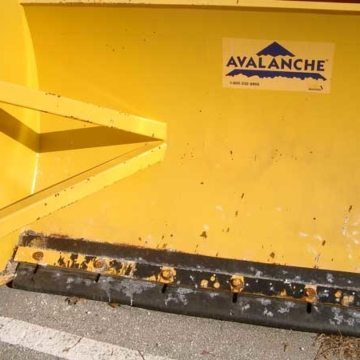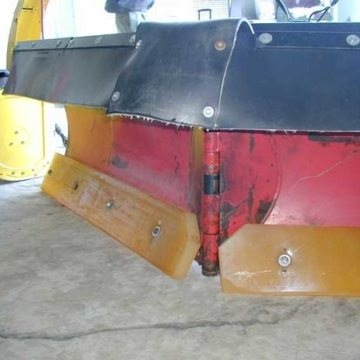Expansion Joint Snow Removal
Expansion Joint Snow Removal and Maintenance of Parking, Plaza and Stadium Expansion Joints
I. GENERAL MAINTENANCE of EXPANSION JOINTS
Regular inspection and maintenance of expansion joints will extend their service-life.
Once a year, expansion joints should be swept out, vacuumed and inspected for any damage to the expansion joint seal and adjacent substrates that could affect performance. If any component of the joint system, or underlying supporting substrate, is damaged, Sika Emseal and/or the qualified installing contractor should be contacted to evaluate the necessary repairs.
II. SNOW-REMOVAL at EXPANSION JOINTS
Snow removal poses the greatest hazard to the long-term service of expansion joints as well as other deck elements such as traffic-bearing deck coatings, sealants, toppings, and even the concrete itself.
For this reason, warranties on Sika Emseal’s materials when used in decks or roadways are contingent on the use of rubber-tipped snow plow blades. In addition the snow removal practice recommendations made by Sika Emseal follow those of the National Parking Association, and the Precast Prestressed Concrete Institute, i.e.:
“A snowplow’s blade can damage a concrete floor, sealants, toppings or expansion joints if proper precautions are not taken. Help prevent damage with a heavy rubber blade edge, plow shoes or casters adjusted to keep the steel plow edge a minimum of 1/2-inch above the floor.” –from: “Parking Facility Maintenance Manual, Fifth Edition, 2015”, National Parking Association.
“Plows and other snow removal implements that come in contact with the driving surface should have well-maintained rubber blades to minimize damage to the deck surface.” –From “Maintenance Manual For Precast Parking Structures”, PCI-Precast Prestressed Concrete Institute, Publication MNL-136-04, 2004
Snow Removal Procedures
To reduce wear and avoid snow plow damage to expansion joints, the following guidelines should be followed during the snow removal process:
- Metal snow plow blades should not come in direct contact with expansion joints, deck membranes, or joint sealants. Blades should be kept a minimum of ½ in. above these sensitive materials. Blades should also not impact vertical offsets between adjacent deck surfaces. Plows must be equipped with well-maintained rubber or polyurethane edged blades to minimize impact damage.
- Reduced equipment driving speed should be used at changes in floor slopes, such as the ends of ramps, washes (i.e., raised areas of the deck surface), at the ends of double tees, and at handicapped ramps.
The following recommendations must be followed to minimize damage to expansion joint systems.
- Whenever possible, remove snow from the expansion joints either by sweeping, shoveling or snow-blowing.
- If snow plows are to be used, the blades must be equipped with suitable rubber or polyurethane edges. It is also recommend that the location of the joints be clearly marked and the plow drivers instructed to lift their plows slightly when crossing the expansion joints.
- Never plow with the length of the blade parallel to the joint. Either plow down the length of the joint with the length of the blade perpendicular to the joint or plow across the joint with the blade at an oblique angle to the joint.
- If possible, it is wise for owners to include in snow plowing contracts that the snow plowing contractor is responsible for any damage to the expansion joint caused by plowing not in accordance with the recommendations herein and for any expenses that may be incurred in repairs as a result of voiding the expansion joint warranty.”
“Rubber-Tipped snow plow blades–nice idea but it’ll never happen,” is a frequent comment we hear when making this recommendation.
On the contrary, rubber or polyurethane tipped blades are in frequent use and are not an unreasonable requirement to make of a decent snow removal company.
Yes, they wear out more quickly than steel, but the contractor doesn’t have to put them on every
vehicle–only the ones that will be used on top decks of parking structures.
Rubber and polyurethane edges from plows come in different shapes and sizes and are readily available. Here are few options:
Here are a few we’ve come across from Canada, to Utah, to New Jersey:
That’s not to say that there are times when the snow-removal contractor forgets or doesn’t brief a new driver, in those cases it is critical that your expansion joint is forgiving of occasional errant plowing. See EMSEAL’s bulletin on Aggregate Loading of parking deck nosing materials for more on how thoughtful material selection can serve the owners’ interests.







